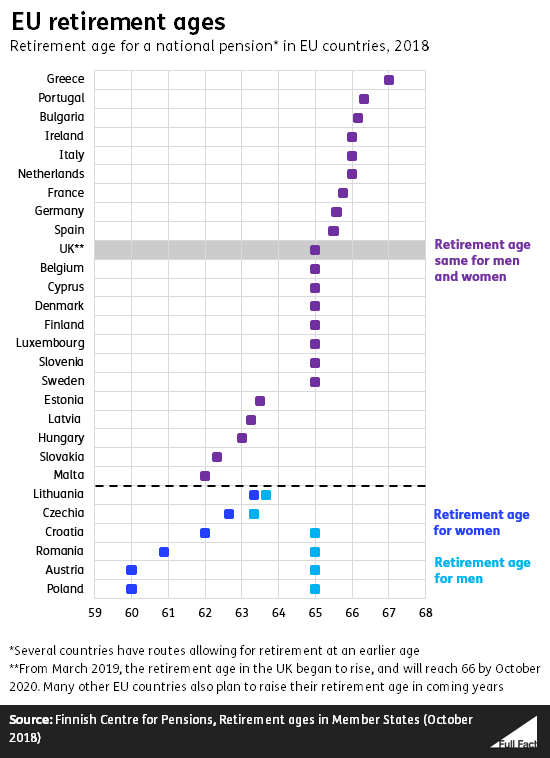Two posts on Facebook, which have together been shared over 60,000 times, claim that Poland has lowered its retirement age from 67 to 60, while the UK’s pension age is going up.
This needs a little clarification.
The retirement age in Poland is 65 for men and 60 for women, following a law which came into effect in October 2017. This reversed a 2013 policy by a previous Polish government which set about gradually raising the retirement age to 67 for both men (by 2020) and women (by 2040).
It’s also not possible to say, as the post does, that Poland has lowered its retirement age using our money, presumably meaning money it has received from the UK via the EU.
Poland is a “net beneficiary” from the EU’s budget—meaning it gets back more than it pays in—unlike the UK which is a net contributor. But Polish pensions are not directly subsidised by the EU. The funding Poland gets from the EU budget goes to specific schemes (such as supporting agriculture, infrastructure or economic development), rather than being a simple transfer of money. Obviously this funding could mean that Poland has more to spend overall, but there is no evidence that EU contributions are what directly fund its lowering of the pension age.
As of late 2018, the state pension age in the UK was 65 for men, and fractionally under 65 for women. In March 2019 it began to rise, and will increase to 66 for both men and women by October 2020. It will then rise again, from 66 to 67, between the years 2026 and 2028, and then from 67 to 68 between 2044 and 2046.
65 is the most common retirement age for both men and women in the EU. And, like the UK, most other EU countries plan to raise and equalise the retirement age for men and women in the coming decades.
